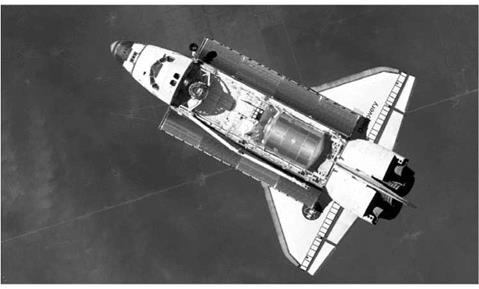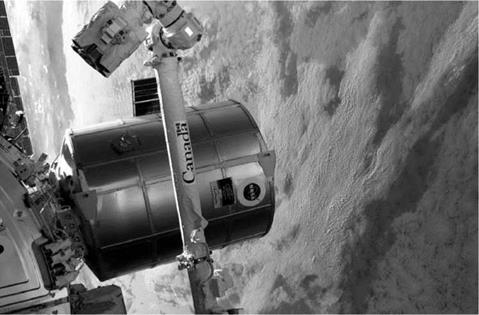Europe
Post-World War II European space efforts were originally split between two organisations. The European Launch Development Organisation (ELDO), to develop a space launch vehicle, and the European Space Research Organisation (ESRO), to develop and exploit payloads for those launchers. The European Space Agency (ESA) was established in 1974 by merging these two organisations. ESA’s Headquarters building was in Paris, and oversaw the activities of 16 member states, 11 of which are participating in the ISS programme. Most member states also have national space agencies and some have thriving national space programmes. In the intervening years ESA has developed a reputation for reliable satellites and deep – space probes. The French/ESA Ariane launch vehicle programme has developed through 14 different configurations, of which the latest, the Ariane-V ES-ATV, is the only one involved in the ISS programme. Ariane has established a reliable series of launch vehicles, placing ESA at the forefront of the worldwide commercial launch vehicle market. In 2007, two out of every three commercial payloads then in Earth orbit had been launched by Ariane launch vehicles.
ESA originally co-operated widely with NASA, but information-sharing restrictions in America in the 1990s led to a change. In 2007, ESA considered Russia to be its principal partner in space exploration. For ISS Russia had an agreement with ESA whereby if the third couch on a Soyuz spacecraft launched to ISS was not taken by a commercial Space Flight Participant, it would be offered to ESA on a commercial basis, before Russia put one of their own cosmonauts in it. ESA has also co-operated with China.
Human spaceflight has never been a major part of ESA’s mission. As a result, although ESA maintains an astronaut cadre, it has developed no crewed spacecraft of its own. A French national project, the Hermes spaceplane, was designed to service the original concept of a free-flying Columbus module, but was not developed. Instead, European astronauts are launched on American Shuttles and Russian spacecraft on a commercial basis. The first ESA astronaut flew on the Shuttle in 1983 and, as of 2007, ESA has between 10 to 15 astronauts in training, several of whom have flown solo Shuttle flights and both Shuttle and Soyuz flights to ISS. So far, only one ESA astronaut has served on an ISS Expedition crew.
ESA’s main participation areas in the ISS programme were
• Multi-Purpose Logistic Modules Leonardo, Raffaello, and Donnatello were Europe’s major input to ISS during the early years of its construction. The three pressurised cargo modules were carried into orbit in the Shuttle’s payload bay. Following docking they were lifted out of the bay by the Shuttle’s Remote Manipulator System and docked to Unity, from where they were accessed internally and unloaded. After re-filling with items to be returned to Earth they were undocked and returned to the Shuttle’s payload bay, allowing them to be returned to Earth and re-used. This was the principal method of returning major items to Earth as all three alternative ISS cargo delivery systems were designed to be destroyed during re-entry into Earth’s atmosphere.
• Columbus was the principal ESA ISS element. The pressurised laboratory module would be launched by STS-120 and docked to Harmony. The laboratory would house ten standard experiment racks housing the following experiments:
1. Fluid Science Laboratory (FSL)
2. European Physiology Modules (EPMs)
3. Biolab
4. European Drawer Rack (EDR)
5. European Stowage Rack (ESR)
The ten racks would be split 51%/49% between European and American experiments. The Columbus module would also have an external facility to allow for the fixture of experiments that required exposure to the space environment. The
|
Figure 7. A Shuttle orbiter approaches the International Space Station carrying a MultiPurpose Logistics Module in its payload bay. |
|
Figure 8. Multi-Purpose Logistics Modules were removed from the Shuttle’s payload bay and docked to Unity before being unloaded via an internal hatch. The empty module was then filled with items no longer required on the station and returned to the Shuttle’s payload bay for return to Earth. |
first two external experiments were
a. European Technology Exposure Facility (EuTEF)
b. Solar Monitoring Observatory (SOLAR)
Two additional external experiments were also planned:
c. Atomic Clock Ensemble in Space (ACES)
d. MISSE-6 (NASA)
• Automated Transfer Vehicle (ATV) is a delivery vehicle for dry cargo, propellant, water, and air. It will be launched by Ariane-V ES-ATV and then perform an automated rendezvous and docking at the rear of Zvezda. The ATV’s Kurs rendezvous equipment and Soyuz docking probe were supplied by RSC Energia, in return for the European Command and control computers in Zvezda, which were the same as those in the ATV. After unloading it would be filled with rubbish before being detached from the station, manoeuvred clear, and commanded to re-enter the atmosphere, where it would be heated to destruction.
• Ariane-V ES-ATV is a heavy-lift launch vehicle, is a mixture of the Ariane-V ECS first stage and the Ariane-V G second stage, and would be used to launch the ESA Automated Transfer Vehicle to ISS at 12-month to 15-month intervals. It is launched from the Guiana Space Centre, in South America.
• Node-2 (Harmony), Node-3 ( ), and the Cupola have all been described
previously. They were constructed by ESA under a NASA contract that provided for the launch of Columbus on an American Shuttle in return for their construction.
ESA maintains six major centres related to their space programmes. In addition, member states maintain national centres to support their own activities related to ESA programmes:
• European Space Agency Headquarters, Paris, France, oversees and manages all ESA programmes.
• European Space Research and Technology Centre (ESTEC), Noordwijk, Holland, is ESA Headquarters and is where most ESA programmes are developed and managed.
• European Astronaut Centre, Cologne, Germany, is where the European astronaut group is trained.
• Columbus Control Centre (COL-CC), Oberpfaffenhofen, Germany, is the control centre for the Columbus Laboratory Module and the operation centre for European experiments on ISS.
• Guiana Space Centre (GSC), was originally established by the French Space Agency as the launch site for their Ariane series of launch vehicles. Today it is operated jointly by France and ESA. For the ISS programme the GSC will be used to launch the Ariane-V, carrying ATVs to the station.
• Automated Transfer Vehicle Control Centre (ATV-CC), Toulouse, France, would operate the ATV in flight.












